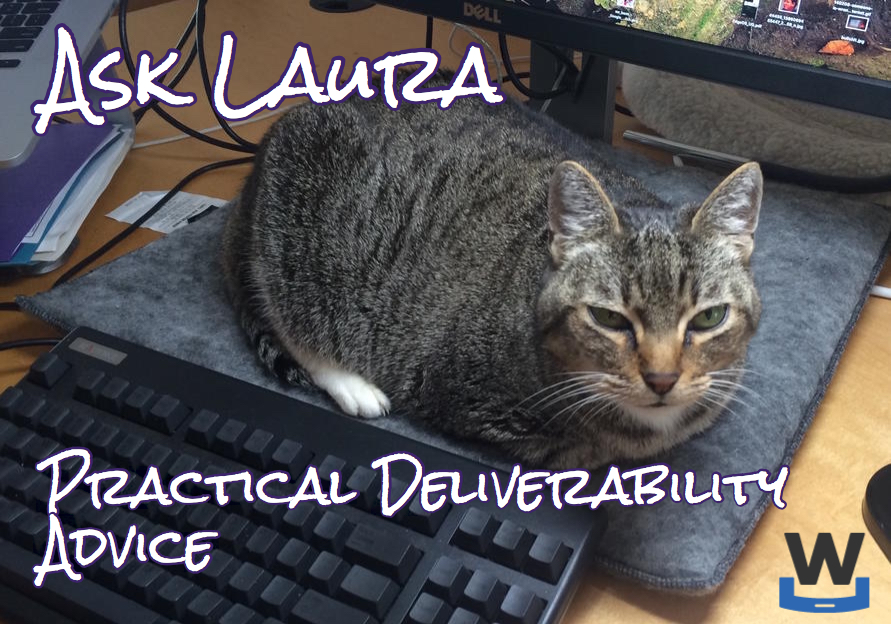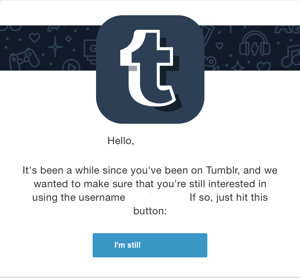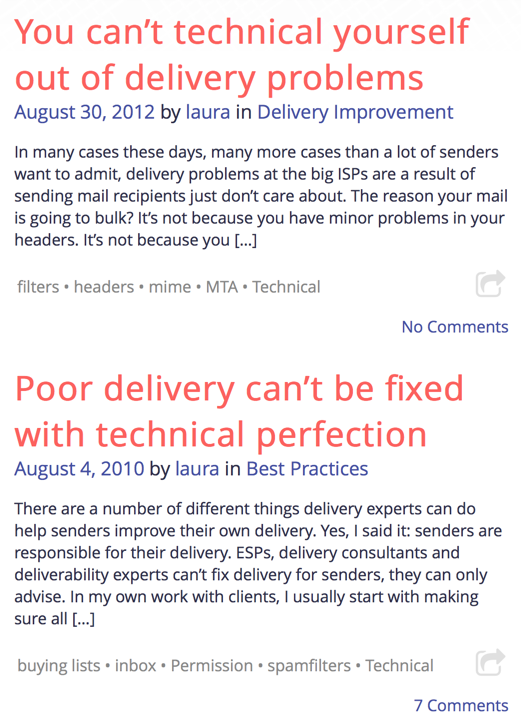Related Posts
Check your tech
- laura
- Aug 25, 2015
One of the things we do for just about every new client coming into WttW is have them send us an email from their bulk mail system. We then check it for technical correctness. This includes things like reviewing all the different From headers, rDNS of the connecting IP, List-Unsubscribe headers and authentication. This is always useful, IMO, because we often find things that were right when they were set up, but due to other changes at the customer they’re not 100% correct any more.
This happens to most of us. Even a company as small as Word to the Wise misses a rDNS update here or a hostname change update there when making infrastructure changes. That’s even when the same people know about email and are responsible for the infrastructure.
One of the most common problems we see is a SPF record that has accumulated include: files from previous providers. There are a couple reasons for this. One is the fact that SPF is set up while still at the old provider in anticipation of moving to the new provider. Once the move is made no one goes back to clean up the SPF record and remove the old entries. The other reason is that a lot of tech folks don’t like to delete things. Deleting things can lead to problems, and there’s no harm in a little extra in the SPF record. Except, eventually, there are so many include files that the lookup fails.
Every mailer should schedule a regular tech audit for their mail. Things change and sometimes in the midst of chance we don’t always catch some of the little details.
Ask Laura
- laura
- Jan 29, 2016
An Advice Column on Email Delivery
When we work with brands and senders to improve email delivery, there are many questions that come up again and again. For 2016, we thought it might be interesting to answer some of those questions here on the blog so others can benefit from the information.
Confused about delivery in general? Trying to keep up on changing policies and terminology? Need some Email 101 basics? This is the place to ask. We can’t answer specific questions about your server configuration or look at your message structure for the column (please get in touch if you’d like our help with more technical or forensic investigations!), but we’d love to answer your questions about how email works, trends in the industry, or the joys and challenges of cohabiting with felines.
Your pal,
Laura
Dear Laura,
I’m having a hard time explaining to our marketing team why we shouldn’t send email to addresses on our lists with very low read rates, that are dormant but not bouncing, or that spend less than 2 seconds reading our mail. I’m also struggling to convince them that it’s not a good idea to dramatically increase email volume during the holidays (i.e. going from one send/day to 2-3 sends/day).
We already segment based on recency, engagement, and purchase behavior, and we also have some triggered messaging based on user behavior.
Can you help me find a way to help explain why sometimes less is more?
Thanks,
The Floodgates Are Open
Dear Floodgates,
ISPs ask two fundamental questions about email when it comes in:
- Is it safe?
- Is it wanted?
If the answer to both those questions is yes, the mail is delivered to the inbox.
Read MoreTumblr Confirming Usernames
- laura
- Oct 1, 2015
Today I received an email from Tumblr asking to confirm I still wanted the username I have there. I’ve not really been using Tumblr, I contributed a few things to the now-defunct Box of Meat, but I don’t really post there much.
I think this kind of engagement is great. Confirming user names will do a whole lot to allow Tumblr to release some claimed but unused names back into the pool. It will also actually help their deliverability and their engagement. If people do want to keep their tumblr names, then they have to click on the message. This means more clicks and better engagement and an overall reputation boost for Tumblr mail.
